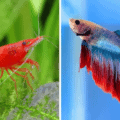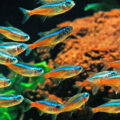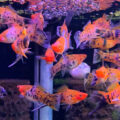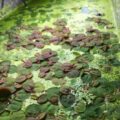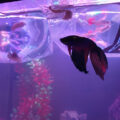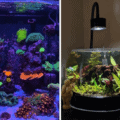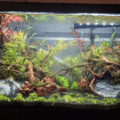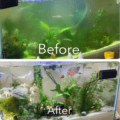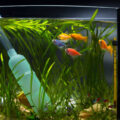Keep your fish healthy all winter by avoiding these common cold-weather aquarium mistakes. Come learn these simple winter aquarium care tips!

Why Winter Care Is Different
When the cold season hits, even the most stable aquarium can face new challenges. Colder air and dry indoor heat can mess with your winter aquarium care routines. Unexpected power outages makes things even trickier.
Seasonal shifts can stress your fish, making them more vulnerable to illness.
In fact, winter stress can trigger disease outbreaks, especially if your tank’s temperature or oxygen levels swing too much. That’s why seasonal fish tank maintenance is essential.
With some smart seasonal aquarium preparation, you can keep your fish happy and thriving until spring. This guide contains all you need to know about cold-weather aquarium care.
Author’s Note: Check out our post The 22 Best Cold Water Fish for a comprehensive list of aquatic pets that are happy in colder water!
Ignoring Heater Calibration

One of the biggest mistakes aquarists make in winter is assuming their heater will handle everything.
To prevent heater failure, don’t rely too much on your old heater. Also, don’t wait until deep winter before testing your heater. That’s just a recipe for disaster.
The more the temperature outside drops, the harder your heater has to work. And if it’s faulty or not well calibrated, your fish could experience dangerous temperature swings.
Minor fluctuations in winter tank temperature can stress your fish, especially tropical species. So it’s smart to have a backup aquarium heater, just in case your main one fails during deep winter.
Use a reliable thermometer to cross-check your heater’s output and ensure your fish tank heater calibration is accurate. Regular calibration checks can save your tank from disaster.
Don’t wait until the temperature drops really low. Prep your aquarium heater winter setup early.
Author’s Note: Checkout our post on the 6 Best Small Aquarium Heaters (Under 6.5″) for Nano Tanks for an in-depth guide to proper aquarium heating!
Overfeeding in Cooler Months
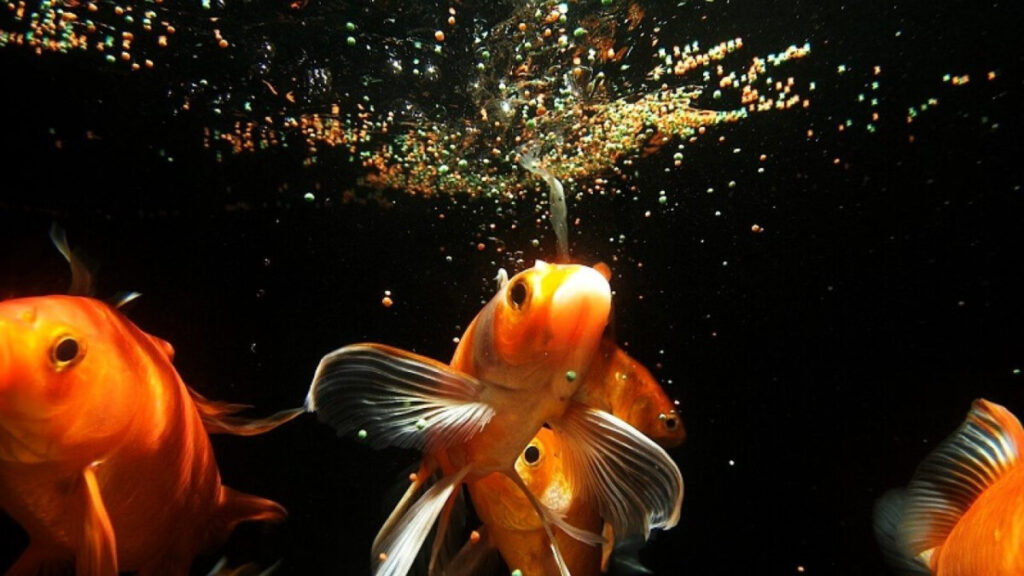
It’s easy to assume that your fish need extra food during winter, but they don’t. That’s because fish metabolism in cold weather is slower. This means that your fish digest food more slowly and need less of it. Overfeeding aquarium fish in the winter season can lead to leftover food being broken down in the tank, which increases ammonia levels.
A good rule is to reduce winter feeding by about 25% and adjust based on your fish’s behavior. Focus on a seasonal fish diet that is nutrient-rich, and easy-to-digest fish diet. Frozen or high-quality pellet foods are great options for this time of year.
Here are practical tips to help you reduce fish overfeeding during winter.
- Pay attention to your fish’s body condition throughout winter.
- If you’re used to feeding twice daily, consider dropping to once per day or doing smaller portions at both feedings. Tropical species like Bettas and Tetras are especially prone to slower digestion in cooler conditions, even when tank temperature stays stable.
- Avoid fatty, oily foods during the coldest months since they’re harder on sluggish digestive systems.
- Constipation and bloating are more common in winter, so watch for the signs.
Author’s Note: For more on feeding your aquatic pets check out The Ultimate Guide to Fish Food: Pros and Cons & Best Choices!
Neglecting Water Changes

When it’s freezing outside, no one wants to deal with buckets of water, but skipping water changes is a very harmful mistake you don’t want to make. When you skip water changes, you make nitrate control next to impossible.
That means nitrate will build up in your tank, slowly poison your fish, and make them more susceptible to diseases.
Regular winter aquarium water changes are critical, but changing the water isn’t the only important aspect.
You also have to do a temperature-matching by sitting water from your tap in the same room as the aquarium overnight or mixing hot and cold water together. Be careful when changing water to not disturb substrate and stress fish with sudden currents.
Here are more cold weather change tips:
- Ensure winter tank hygiene by sticking to your routine of 10-20% water changes each week, using dechlorinated, temperature-matched water.
- Invest in a siphon system that makes the process faster and less messy.
Poor Aeration in Dry Air Homes
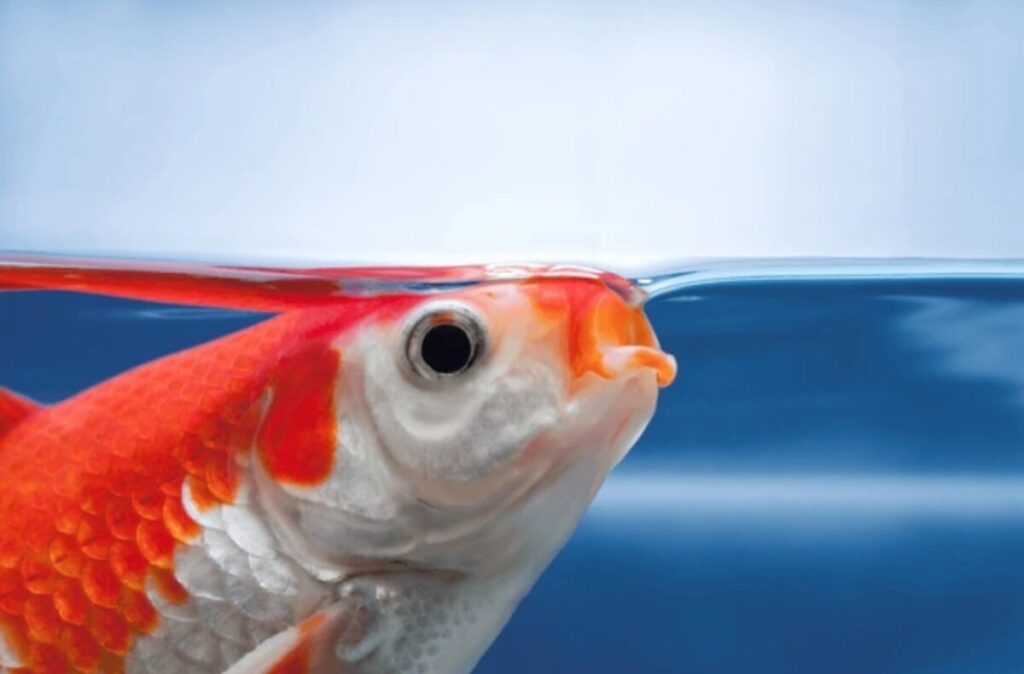
During winter, heating systems dry out the air, and we tend to keep windows closed. This can lower oxygen levels in your tank, especially if you keep the lid sealed to preserve heat, but it makes winter aquarium aeration a little tricky.
Dry air aquarium care means closely monitoring the oxygen levels in your tank and the humidity level around it.
Fish rely on proper gas exchange at the water’s surface, and stagnant air or a lack of movement limits that. So, if you notice your fish gasping near the surface or moving sluggishly, oxygen might be low.
Resolve the oxygen loss winter problems by creating gentle water movement with air stones or wavemakers.
You can also add live plants to your tank, because they produce oxygen during daylight hours. These fish tank oxygen tips make a huge difference in overall tank health. Adding a small room humidifier can also help balance the environment.
These inexpensive seasonal aeration solutions will improve circulation and keep your fish more active through the cold months.
Forgetting Backup Plans for Power Outages
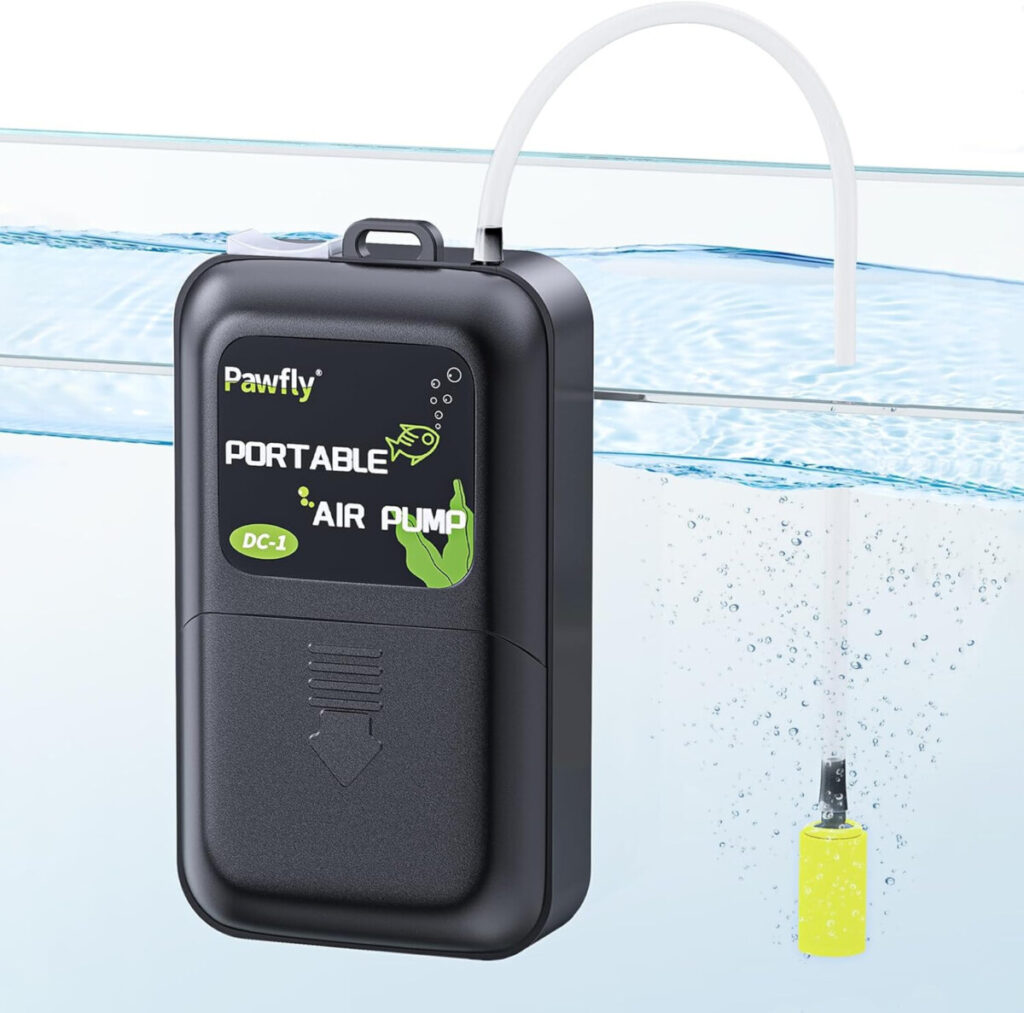
Pawfly Aquarium Battery Air Pump
Found On Amazon
Winter storms and unexpected power cuts can quickly turn an aquarium into a survival challenge.
Without power, your heaters and filters stop working, and oxygen levels in the tanks drop fast. That’s why it’s super important to have a fish tank winter backup plan ready before disaster strikes.
To retain heat, you can prepare by insulating your tank with foam boards, chemical hand warmers, or insulated blankets during an outage. But if the power remains off for a really long period, to preserve warmth, avoid opening the lid too often.
Building a reliable backup oxygen supply is just as important as heating. Invest in battery-powered air pumps to maintain oxygenation if your main system fails.
For serious aquarium power-outage prep, consider investing in a small generator or a UPS (uninterruptible power supply) that can run your essential equipment for several hours or even days.
These winter outage aquarium strategies can mean the difference between losing a few fish and keeping your entire tank population safe.
Ignoring Room Drafts & Placement

Winter fish tank placement often gets overlooked, but it’s one of the most important factors in maintaining a stable environment during the season.
Tanks near windows, vents, or outside doors experience cold drafts and frequent temperature fluctuations. This stresses fish and causes heaters to work overtime.
For optimal aquarium draft protection, relocate your tanks away from drafty areas.
It might seem like a warm spot is best, but don’t place them near heating vents. The fluctuating hot air will cause temperature swings that stress your fish just as much as cold drafts do.
If relocation isn’t possible, the next step is to consider fish tank insulation. Hang heavy curtains behind tanks near windows or insulate the exposed sides with foam panels.
Some hobbyists use aquarium-safe insulation wraps explicitly designed for this purpose. They provide excellent temperature stability while still allowing you to view your fish from the front.
Consider adding a small space heater nearby (not too close) to keep the surrounding air stable.
Proper cold-room aquarium care ensures fish comfort, consistent temperatures, and improved energy efficiency.
Skipping Equipment Maintenance

Equipment maintenance is where small efforts yield huge rewards. Your aquarium equipment works overtime in winter, and neglecting it can create bigger problems.
Filters, pumps, and lights all operate under increased strain in sealed, heated environments. Performing regular fish tank winter checkups helps you catch small issues before they turn into emergencies.
Don’t know the best way to carry out equipment cleaning? The tips below will guide you.
- Take time each month to rinse or replace filter media and wipe down impeller parts. Ignoring regular winter aquarium filter care leads to clogs, reduced oxygen flow, and cloudy water.
- Check for slime buildup in pumps and tubes. An old toothbrush works perfectly for scrubbing these areas. Seasonal pump maintenance prevents silent failures and ensures smooth water circulation.
- Check your lighting system. Dust buildup can reduce brightness and affect your plants’ growth.
- Keep a maintenance journal to note down what you cleaned and when. You may observe patterns that’ll help you schedule work efficiently.
Spending a few minutes on maintenance saves you hours of frustration later and keeps your aquarium ecosystem balanced and healthy through winter.
Conclusion: A Stress-Free Winter for Fish
Taking the time to prepare your aquarium for cold weather is the best way to ensure your fish enjoy a calm, healthy season. With the right winter fish tank checklist in place, you’ll prevent stress, disease, and temperature shocks.
Remember, winter aquarium prep involves more than just keeping your tank and fish warm. It also involves the right levels of oxygen, ideal feeding habits, and regular maintenance.
By following this seasonal aquarium guide, you’ll create a comfortable environment that supports happy, healthy fish winter after winter.

